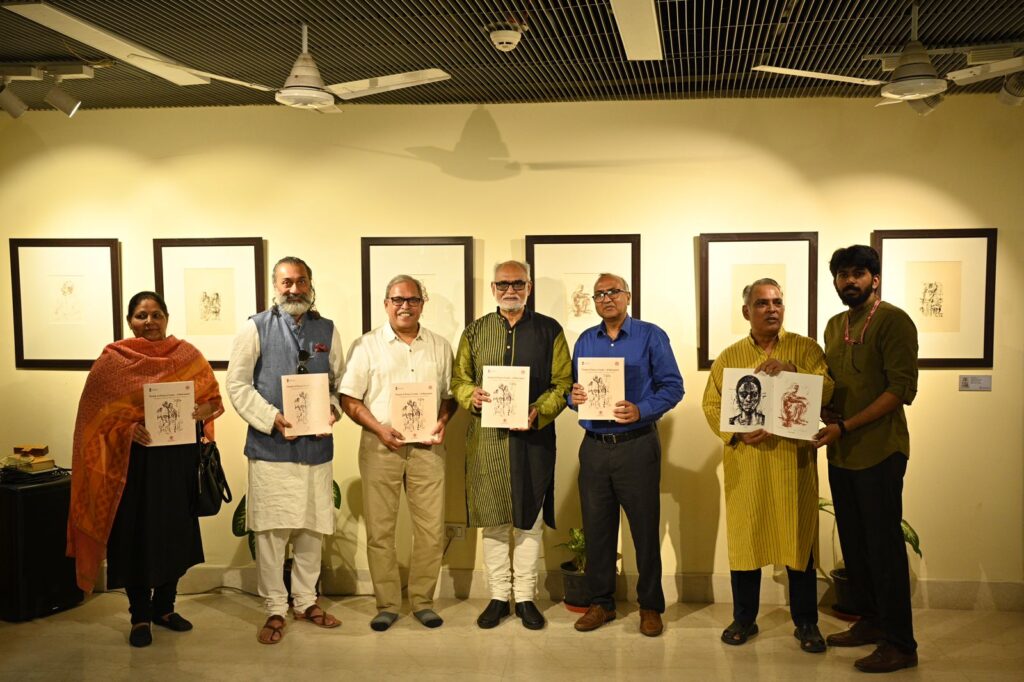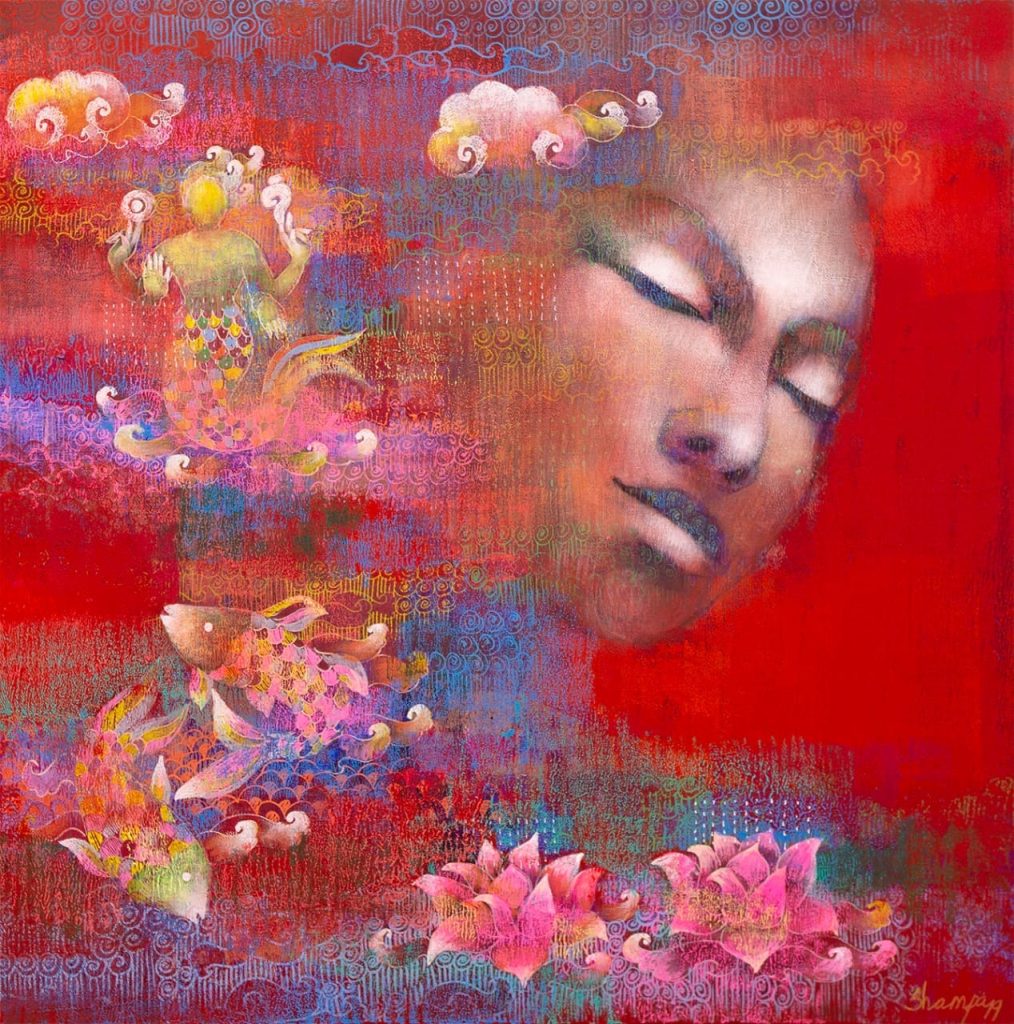The exhibition ‘People & Places of India – A Retrospect‘, curated by The Cultural Archives of IGNCA, features lithographs by Karl Erich Müller straight from the IGNCA Archives, displaying brilliant renderings by the German artist narrating his travels in various Indian cities and towns. Müller’s lithographs highlight one of the critical features of the printmaking medium i.e. ‘social narrative through imageries’.
Around the 1970s, India and Europe had a significant cultural exchange in the fields of arts, crafts, music, and dance, and as a result, many European artists and scholars were keen to visit the Indian subcontinent. Without a doubt, the majority of them began their journeys at Rabindranath Tagore‘s Santiniketan, which is recognized globally as a hub for Indian art and culture. Printmaking as an art form blossomed and was extensively practised in Kolkata and Santiniketan during this time. Müller, a proficient painter and printmaker, wanted to translate his sketches and drawings into prints and chose ‘lithography‘ as his medium. He transformed most of his drawings into prints and published them as catalogues, which now reside at the German National Library.
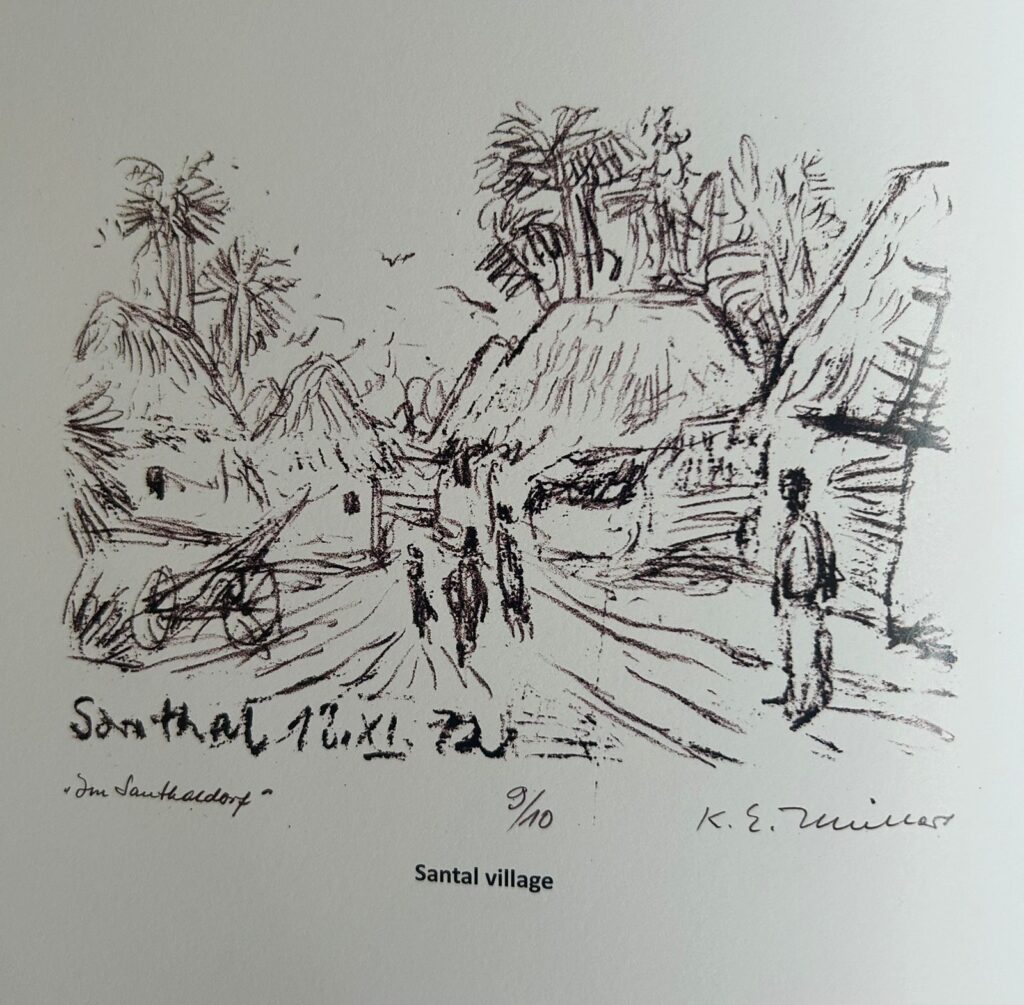
The exhibition ‘People & Places of India – A Retrospect’ showcases the archive collection of Karl Erich Müller’s works at IGNCA for the first time. Aside from the IGNCA, the National Gallery of Modern Art (NGMA) in New Delhi, and the Bharat Kala Bhawan, Varanasi houses a few collections of Müller’s oil-print works. Another aspect that contributes to the exhibition’s significance is that Müller’s works are rarely documented, therefore these archives serve as significant remnants of his creative journey in India and the time he spent here. The collection of twenty lithographs on display at IGNCA is crucial to understanding the chronology of the dates and places Müller visited in India between 1972 and 1975.

Karl Erich Müller (1917–1998) was a well-known visual artist in Germany. Müller, a pupil of Burg Giebichenstein Art School (1946-48) noted for the ‘Socialist Realism‘ in his works, travelled to India several times to study Indian culture and grasp the societal values of the common people. During his travels in India, he made works that revealed the lives of working people, particularly industrial labourers, masons, and coolies, as well as the daily lives of working-class individuals such as vegetable sellers, fisherwomen, etc. in Indian culture.
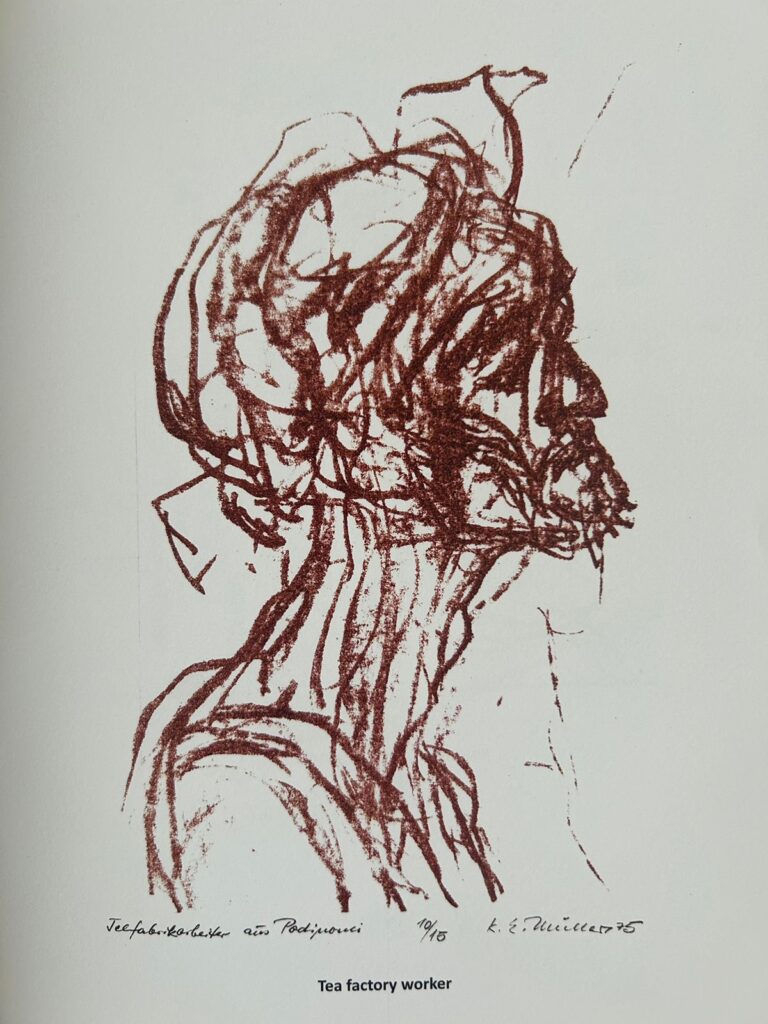
His early works were influenced by expressionism, and with time his style gravitated toward drawing. He created portraits, travel pictures, illustrations, and gesture drawings focusing on realistic representations of the daily lifestyle of Indian working-class people. The explicit representation of the workers’ hardships and their lifestyles made Müller’s works highly political, representing historical and contemporary issues.
Karl Erich Müller’s lithographs are categorized into various themes such as worker life, landscapes, village festivals, monuments, architecture, and portraits of his contemporaries. His paintings are notable for combining socialist realism with non-European forms inspired by his visits to numerous Asian countries such as India, Sri Lanka, Pakistan, and Vietnam. His paintings appear to capture significant events and places throughout his travels. He created portraits of painters K.K. Hebbar and Lalita Lajmi, which reveal his close connections and interaction with his contemporaries. Müller’s emotive and bold forms in rapid lines, contours and gesture drawings translated into lithographic prints effectively convey the anguish and hardships of working-class people in India on a global scale.
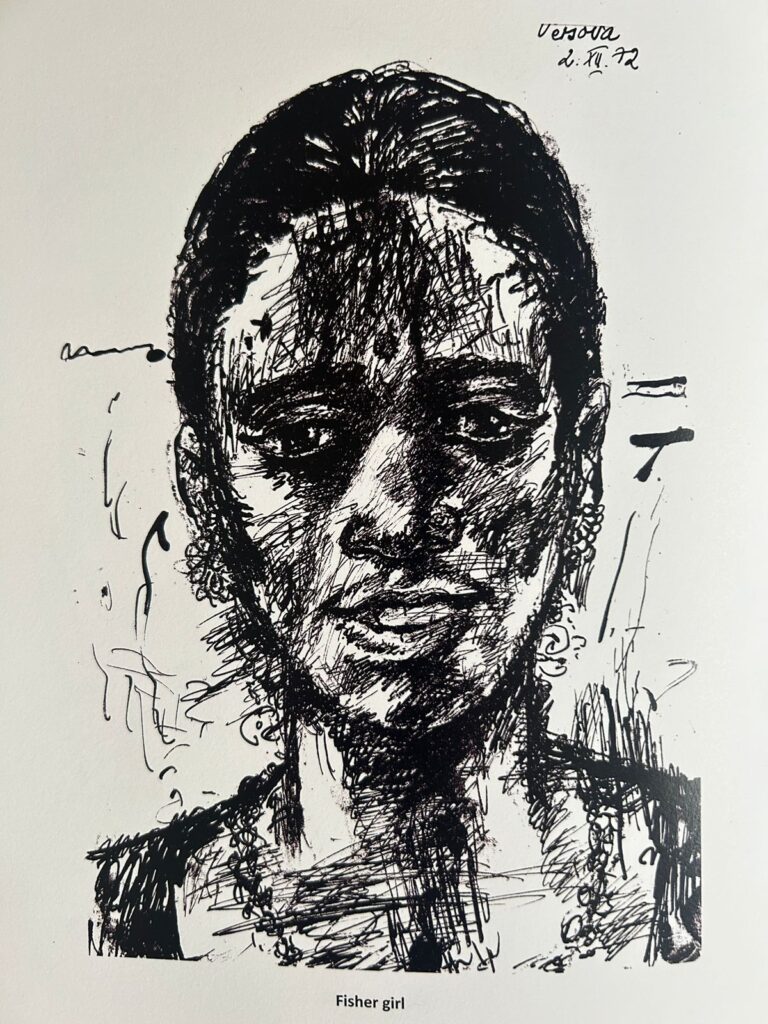
‘People & Places of India – A Retrospect’ was organized by the Conservation and Cultural Archives Division, IGNCA, New Delhi. The research and curation team involved Prof. Achal Pandya (Head, of Conservation & Cultural Archives, IGNCA), Dr. Kumar Sanjay Jha (Archivist, Cultural Archives, IGNCA) and Mr Sadhish Sharma (Project Assistant, Cultural Archives, IGNCA). The show was inaugurated on ‘International Labour Day’ on Wednesday, May 1, 2024. The program was inaugurated by Shri. Dattatreya Apte – a renowned Indian Printmaker and artist, Chief guest Dr Sachcchidanand Joshi (Member Secretary, IGNCA), followed by a catalogue opening ceremony.
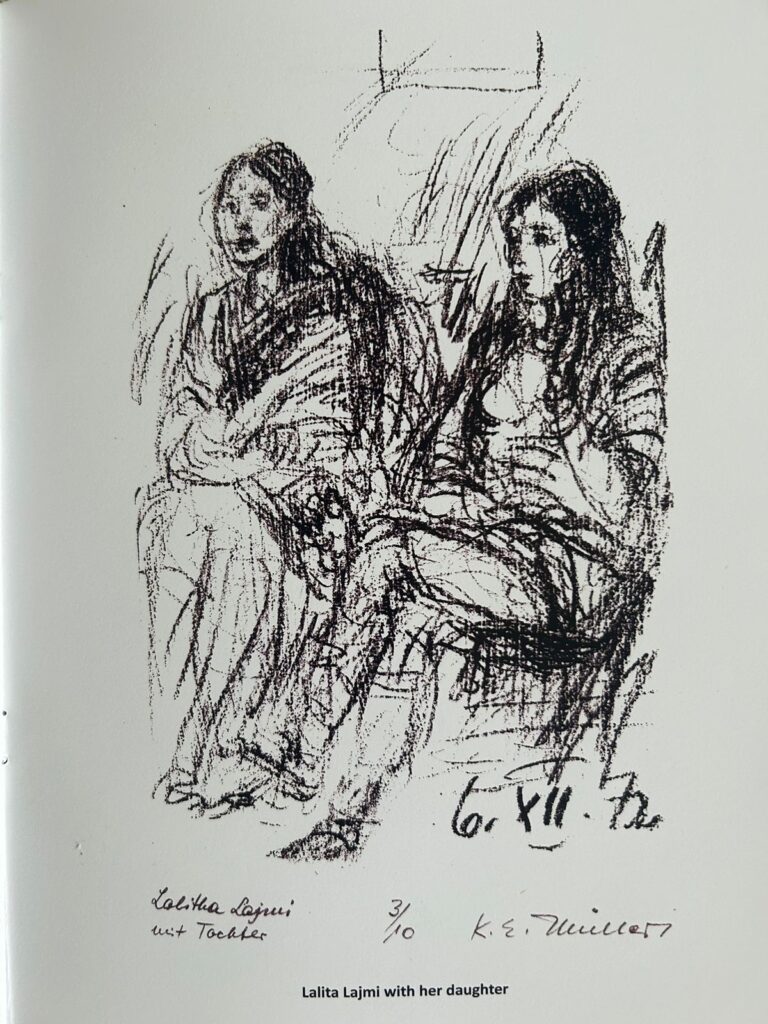
While addressing his thoughts about the exhibition, Shri Dattatreya Apte elaborated on how Müller’s lithographs serve as keen observations of people and their daily lives, offering a poignant glimpse into the society of his era. Dr Sachchidanand Joshi expressed the unique and surreal quality of Müller’s lithographs and how simply yet explicitly they capture the essence of ordinary lives. Prof. Ramesh Chandra Gaur, (Dean, administration and Head of the Kalanidhi Division) asserted the role of Müller’s lithographs as a historical narrative of his times presenting an unfiltered portrayal of reality that contrasts with potentially biased historical accounts. Dr. Kumar Sanjay Jha introduced the relevance of Karl Müller’s works with the International Labour Day in the context of ‘Socialist Realism’ evident in his works.
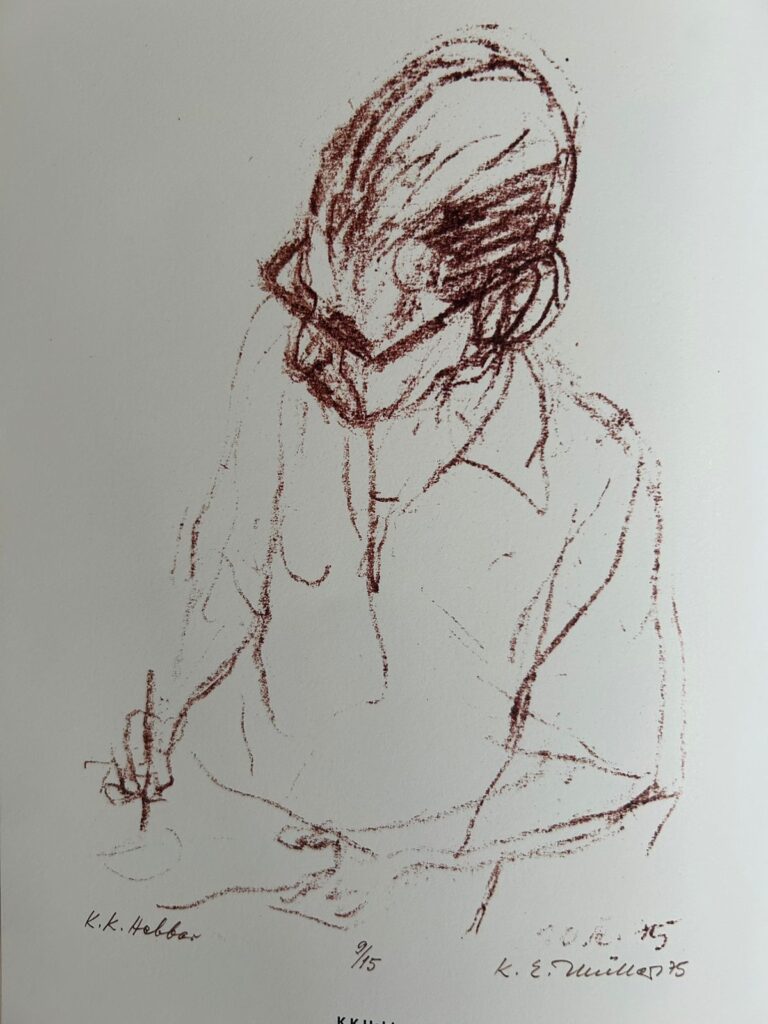
The exhibition is open for public view which marks Müller’s profound connections with India, the influence of the Bengal School and Santiniketan on his artworks and his interactions with Indian artists and people. Müller’s lithographs are both visually appealing and provide a curious glimpse into the daily lives of Indian people and societies in the early 1970s. His choice of the subject and composition sense captivates the viewer’s attention, while his strong bold lines immerse the viewer in the details and give it a deeper sense of meaning.
References :
- PIB Delhi, Ministry of Culture, (2024, May 1), ‘Exhibition Showcasing Lithographs of Karl Erich Muller held at IGNCA’ [Press Release].
- (2024), People & Places of India – A Retrospect (Lithographs of Karl Erich Muller from IGNCA Archives) [Exhibition Catalogue], New Delhi, India : Indira Gandhi National Centre for the Arts, Janpath Building (near Western Court), New Delhi – 110001.
Image Courtesy – IGNCA
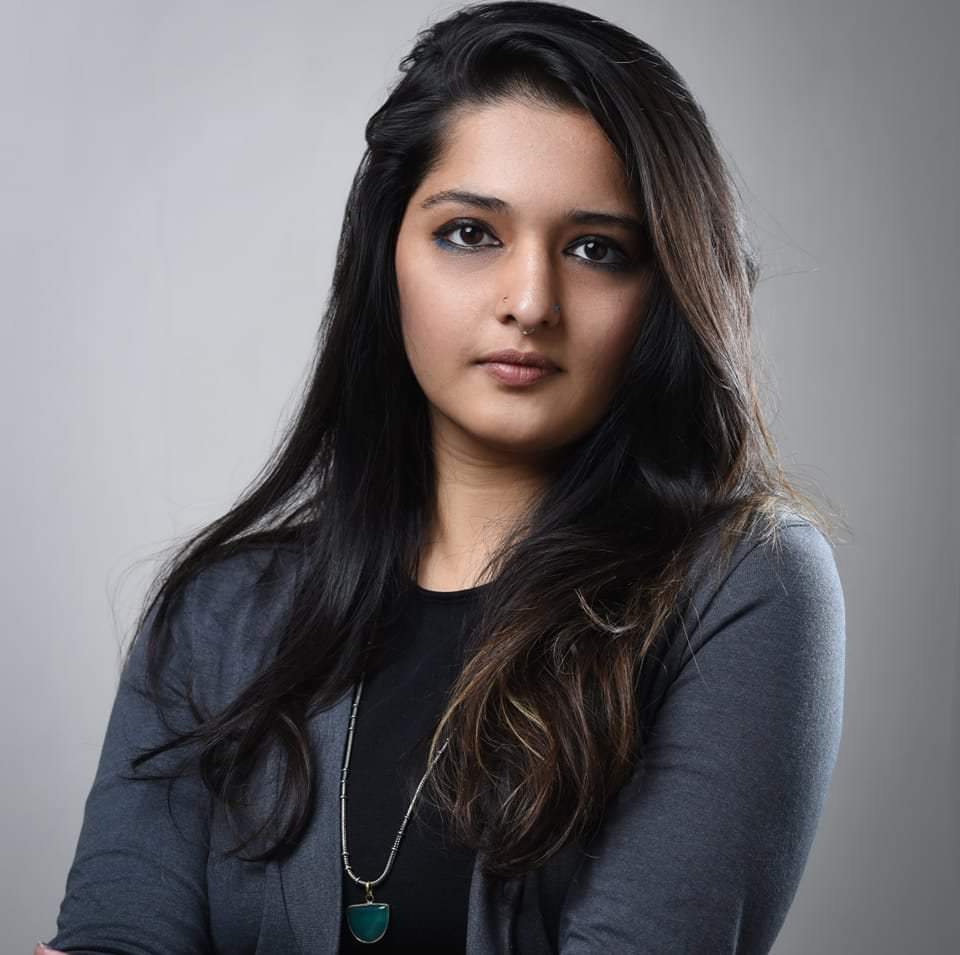
Contributor

